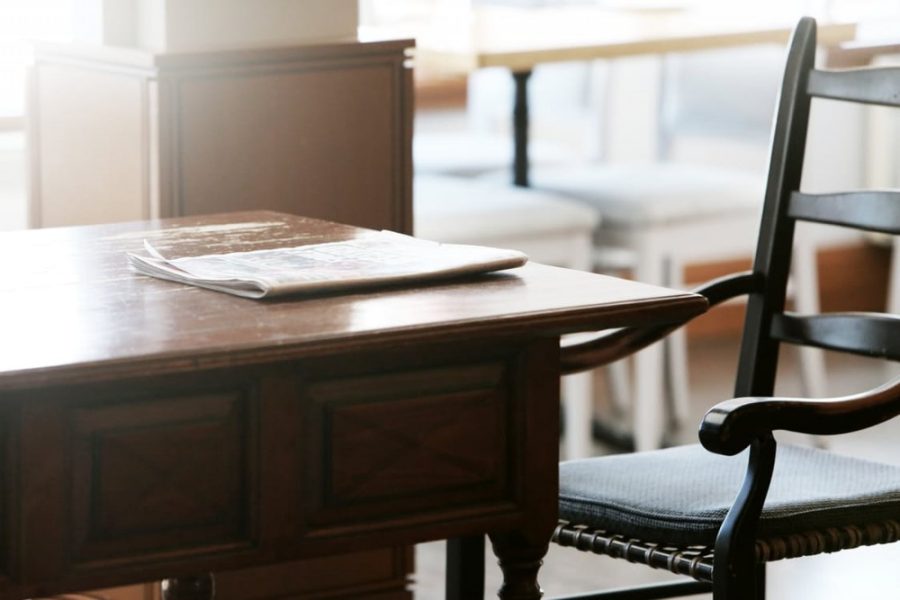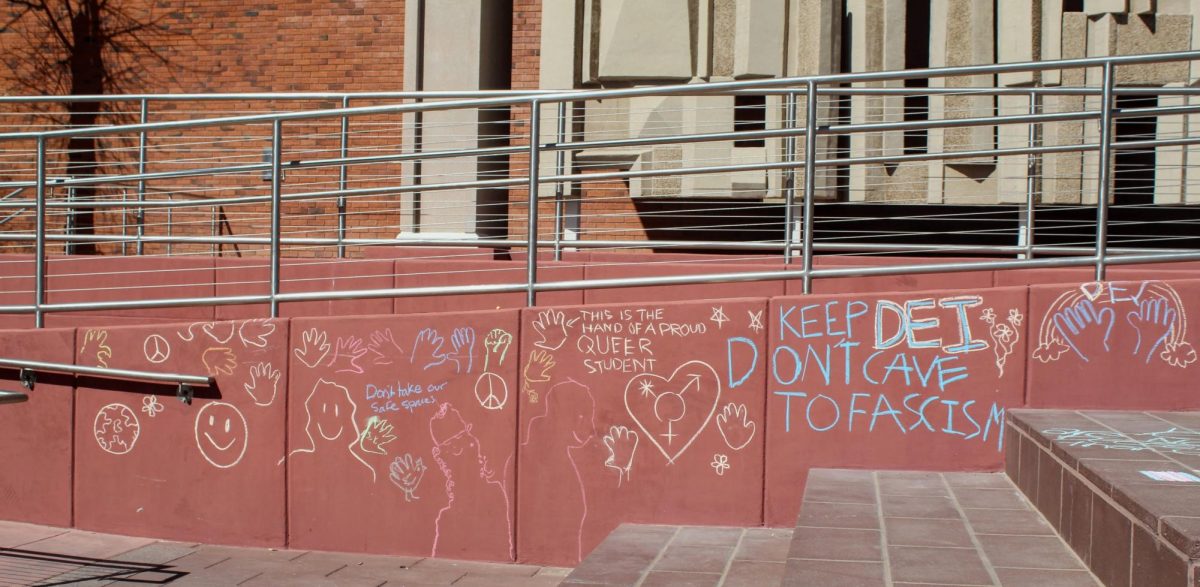The search for the 22nd president of the UA is beginning to wind down. Yet, nobody outside those serving on the search committee know anything about the candidates.
There are fewer than 20 presidential hopefuls left in the search and discussions with prospects for the position began Thursday and continued on Friday.
Bill Ridenour, chair of the search committee, expects the committee to forward at least one name of one prospect to the Arizona Board of Regents for selection.
The university could have a new president as soon as early March, according to Reidenour. Nevertheless, no information about candidates has been released.
It is becoming increasingly common for search committees to keep information about the prospects confidential throughout the process. According to Lynn Nadel, the faculty chair serving on the committee, the conventional wisdom is that confidentiality is required these days.
“The way things work now, anything other than a closed process up to this point would have been counterproductive,” Nadel said in an email to the Daily Wildcat. “At this point we are vetting prospects, not yet candidates—many of whom might have to withdraw their tentative interest if the search were open.”
Committees or boards that use confidential practices in presidential searches generally use variations of the same reasoning: It will hurt the reputation of candidates, scare off the most qualified people and the person the university needs will potentially just go to the private sector to avoid public scrutiny.
“Public searches are not going to attract the best candidates,” Ridenour said.
Still this logic hasn’t convinced everyone.
“We wish it could have been more public since we’re a public university,” said Stephanie Choi, co-director of Students for Sustainability.
Some worry if this decision is made behind closed doors that there could be issues that the committee overlooks.
“By having an open vetting process it can eliminate problems that the hiring committee misses,” said David Cuillier, director of the School of Journalism and an authority on the freedom of information. “I think it’s a big mistake to make such an important decision in secret.”
The faculty were provided access to a survey that, according to Ridenour, had over 600 respondents and was used to help the committee determine what to look for in the next president.
However, students did not have any similar survey or way to participate in the search. Some students have wondered about the extent to which they could have been involved.
A few students, mostly the Graduate and Professional Student Council and the Associated Students of the University of Arizona, have had indirect and sparse involvement with the search. There is only one undergraduate student and one graduate student actually on the committee.
“My job is to give a student prospective,” said Vianney Careaga, student regent on the search committee and UA political science student. “I think the committee and the board, likewise, do an excellent job in helping the students advance their voice.”
However, Careaga said he hasn’t talked to any student group other than ASUA.
“I haven’t had the time recently due to my school schedule,” Careaga said. “I’ve been hoping to do that within the near future once we have more information that can be publicly released about the search process.”
According to Ridenour, there will probably not be any more discussions with constituency groups, and because of confidentiality, the committee does not intend to release any information publicly. The only way this could change is if the board isn’t satisfied with the finalists presented to them.
RELATED: UA presidential search committee begins discussions with prospects
The other student on the search committee, graduate student Sarah Netherton, also met with student government.
“Early on I did meet with GPSC to see if they had any feedback and made myself available for conversations with students or any other university community member at any point in the process,” Netherton said.
However, according to Netherton, her role on the committee was not as a constituent representative. Instead, she was chosen “to represent the best interests of the university.”
Students involved with the different organizations on campus have been left with nothing but questions regarding the search.
“Whoever is going to step into this position has a lot of power to change what’s going to happen to our futures,” said Robert Johnson, Tech.Global developer at the UA. “I’m looking to grad school and this puts me on edge. What am I to expect?”
Other students are uneasy at the lack of information released by the search committee.
“That kind of speaks for itself, how little students know about it in the first place,” said Cole Pihl, co-director of Students for Sustainability. “It seems so closed, and that’s very frustrating.”
The process to find a new president kicked off in July 2016 not long after current President Ann Weaver Hart made public her decision to let her contract expire. However, the first search committee meeting didn’t take place until October.
The search committee consists of 26 volunteer members with a large showing from the business community. There are also five regents, a small group of UA administrators, two students and three professors.
“The search committee is large and we purposely put on a number of people from the Tucson community that were either in business or non-profits,” Ridenour said. “We did this so that the community and the business community would have an input into the search.”
RELATED: UA presidential search nears conclusion
Members of the campus community would have liked to see more student and faculty involvement in the search.
“The most concerning thing about this process is the number of business people and non-academics on the search committee,” said Jasmine Sears, director of operations of Innovate UA and administrative vice president of GPSC. “They could put more students and faculty on the search committee. That way the UA is better represented when choosing our next president.”
According to documents released by the board, the next president will have to be someone with notable achievements in higher education, who understands the need for research investments, has a new vision for the UA and has remarkable business judgement.
Still, the committee may be at odds with students and faculty about the chief qualities they would like to see in the finalist.
“Because of the horrible cuts that the state has made, revenue generation has got to be a critical skill,” Ridenour said.
Yet, many faculty and students would like to see a president that will focus on the academia over the business of the university.
“While I understand that a university has to be profitable to continue to run,” said Jude Udeozor, president of GPSC. “I think I would rather have a candidate who does not treat the university as entirely a business, but [as] a system that educates students and prepares them for real-life problems.”
For some, the distinction between someone who can operate a business and someone who can operate a university is particularly important.
“A lot of people in the state of Arizona think that a CEO has all the skills you need to run a university, and as a student here, I strongly disagree,” Sears said.
Others said the most important aspect of the next president is commitment to scholarly work.
“The next leader of the UA should be a real academic,” said Steven Schwartz, chair of the Committee of Eleven, a UA faculty committee.
According to Ridenour and the guidelines put out by the board, the committee has placed an emphasis on making sure the next president has an academic background with considerable experience in higher education institutions.
The public used to have a chance to meet and compare candidates with a campus visit. After interviews, the search committee would name a small group of finalists. These finalists would then come to campus to meet students, faculty and other constituency groups.
President Hart was the first president at the UA to be chosen without a campus visit since at least 1971, excluding those that served on an interim basis.
According to Ridenour, a campus visit is unlikely but has not been completely ruled out.
There is a fear that the closed process could create skepticism and doubt.
“The way to rebuild trust is to have an open, transparent process,” Cuillier said. “To do it in secret not only could lead to a bad decision, but could also lead to mistrust.”
The committee maintains that keeping the process confidential is the right choice.
“We decided we’re very comfortable with the approach that we’re taking,” Ridenour said.
If anyone has concerns that they would like to have addressed or questions about the search you can contact the relevant groups below:
Bill Ridenour, Chair of the Search Committee: Bill.Ridenour@azregents.edu
Jude Udeozor, President of GPSC: judeozor@email.arizona.edu
Vianney Careage, Student Regent: Vianney.Careaga@azregents.edu
Follow J.D. Molinary on Twitter.









